It has been 6 days since the Southern Expedition for the Comprehensive Marine Biodiversity Survey (CMBS) started. Yesterday was my first time stepping into the base camp for the expedition, meeting familiar and new faces. I am involved in CMBS as a volunteer since Dec 2010 as a regular volunteer. The Southern Expedition is the second expedition event I had participated in, with the first at the Northern Expedition held in October last year.
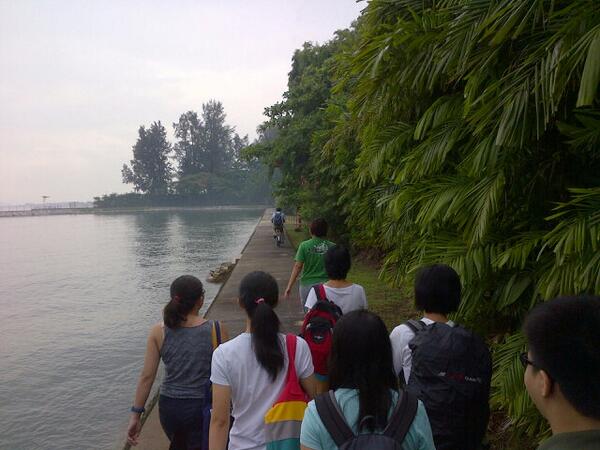 |
Prof Peter Ng takes special transport to base camp, a foldie.
Image from my twitter. |
This morning at 3am, a group of volunteers and scientists gathered at the dinning area to get ready for the first predawn reef survey. With two boats from Summit Marine System, about 18 of us landed safely at Terumbu Semakau, a submerged reef just to the north of Pulau Semakau, Singapore's only landfill location.
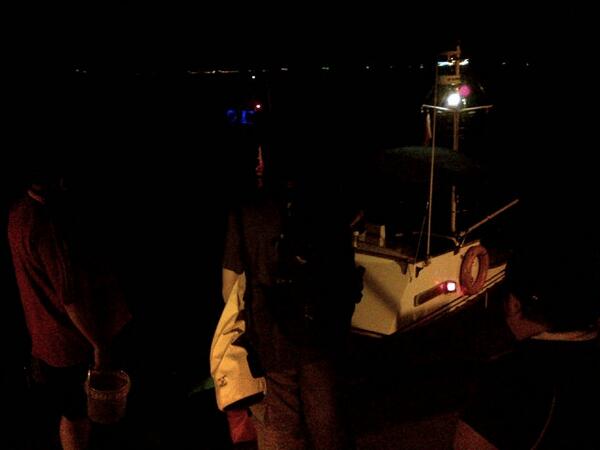 |
Getting ready to board the boats.
Image from my twitter. |
Armed with pails, many containers of various sizes, fishing nets, small brushes, tweezers and gloves, the experienced group of people quickly moved onto the reef in different directions and started working.
Right at the location where we left our personal floatation devices, a
Burrowing snake-eel (
Pisodonophis crancrivorous) showed itself, very curious at the human presence. I was not even ready with my big camera to take photo of it.
 |
| Burrowing snake-eel |
In a nearby patch of
Delicate feathery green seaweed (
Caulerpa sertularioides), a sneaky crab takes a peak to check me out.
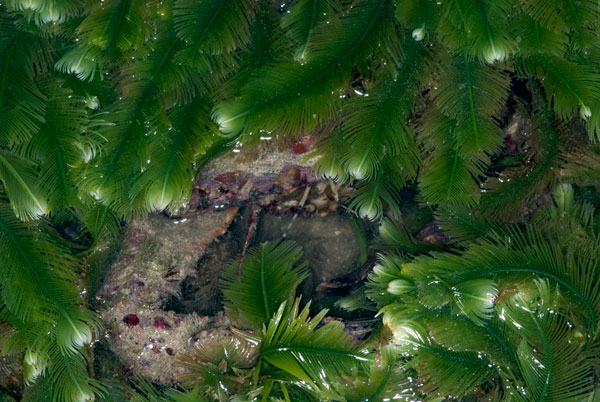 |
| Crab hiding under dense Delicate feathery green seaweed |
Very well camouflaged on the reef are these little shrimps, which I am not sure of its identity.
 |
| Shrimp with red markings. |
This morning, Rene found two types of stinging anemones -
Haeckel's anemone (
Actinostephanus haeckeli) and the
Fire anemone (
Actinodendron sp.) These two anemones are able to deliver a nasty sting when touched. We have to be very careful at what animals we are handling when out on the shore.
 |
| Haeckel's anemone with visible area near oral disk. |
 |
| Haeckel's anemone, with tentacles and visible body column. |
 |
| Haeckel's anemone, closeup of tentacles. |
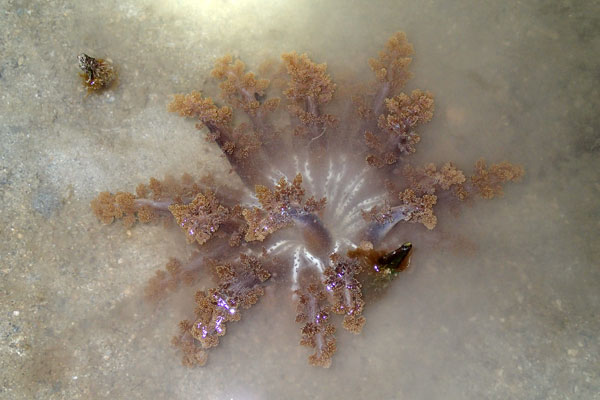 |
| Fire anemone |
One of the interesting findings would be this
Leathery sea fan (Family Gorgoniidae) with a wire-like central support through the structure.
 |
| Leathery sea fan with polyps extended |
 |
| Leathery sea fan with wire-like central support. |
Seeing the
False clown anemonefish (
Amphiprion ocellaris) on the
Giant carpet anemone (
Stichodactyla gigantea) never fails to excite me. We usually refer the False clown anemonefish as "Nemo", based on the Disney Pixar's movie 'Finding Nemo'.
 |
| False clown anemonefish on a Giant carpet anemone. |
As we have already identified the False clown anemonefish, there was no need to collect the fish for research purpose. Dr Daphne Fautin has also reminded us not to collect these fish as they are equally important to the anemone as it the host to them. A false clown anemonefish lives on a specific anemone for life and is not able to survive if transferred to a different anemone host. So it is important not to collect any animals from their habitats for personal rearing.
As the sun rose from the city's skyline, the first reef survey ended as everyone waits patiently for the dinghy to pick us up in groups before heading back to base camp.
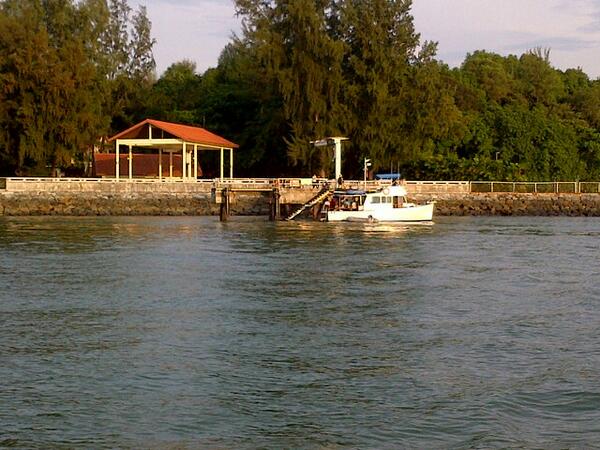 |
Back at base camp.
Image from my twitter. |
I will be doing another reef survey tomorrow morning.
For more happenings on Day 6, check out the Mega Marine Survey blog:
Sponge Explosion on Day 6 of the Southern Expedition.













No comments:
Post a Comment